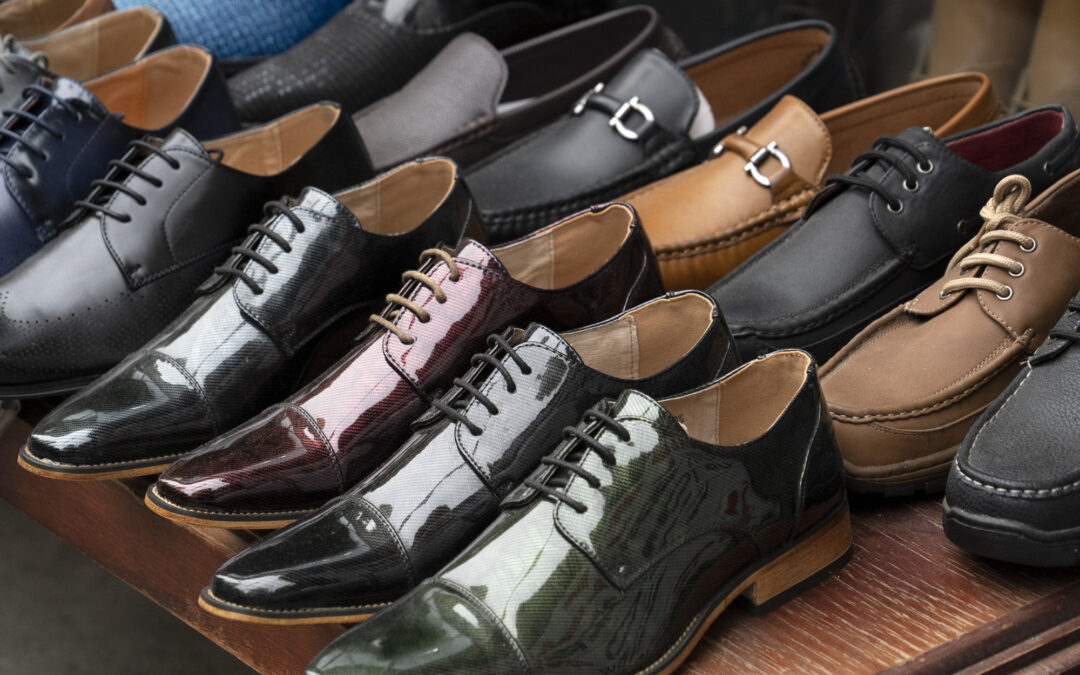Modern shoe production involves a complex process where different companies handle different parts. For instance, a shoe factory might design the outsoles of the shoes but then outsource the tooling and rubber pressing to specialized companies. The shoe factory then combines all the parts to ensure the upper and outsole fit correctly.
Here’s how the shoe-making process goes down:
- Cutting the Shoe Material
The shoe-making process begins with cutting and marking using clicker-cutting machines. These machines require specialized cutting dies specifically designed for each shoe pattern component.
Computer-controlled drag knife cutters use a vacuum table to hold materials in place while a blade cuts out shapes and patterns. This technology allows for custom mass production of shoe parts quickly and accurately.
- Applying the Footwear Logo
Once the shoe components are cut and labeled for assembly, logos can be added. Logos may be printed onto the shoe parts through silk screen printing, embroidered, or heat welded.
- Stitching the Footwear
Depending on the complexity of the shoe design, the stitching line may have up to hundreds of these machines, each designed to perform a specific task. Once the seams are all in place, it’s time to give the shoe its form using a machine that heats thermoplastic counters in the shoe’s toe and heel area. Once the material has been heated, the shoe is clamped to maintain its shape.
The last step of the stitching process is to use a special sewing machine to attach the fabric bottom to the upper. This machine will stitch the two fabrics together in the correct alignment so that the upper isn’t crooked or twisted.
- Assembling the Shoe Together
At the start of the assembly line, a steamer will soften the shoe’s upper part to be more flexible and ready for lasting. After the upper part is softened, the lasting machines will be used to ensure that the upper part of the shoe is firmly attached to the last.
A toe-lasting machine firmly attaches the shoe’s upper to the last, creating a secure and comfortable fit. The machine pulls the upper into place while injecting hot glue to secure it. After the upper is secured, it is placed into a cooling tunnel and shrinks even further. This ensures that the upper is securely attached to the last, resulting in a comfortable fit.
- Applying Primer and Cement
The uppers and outsoles now travel along the conveyor belt, each receiving a layer of primer and cement. Then they move through a heat tunnel to dry them out. Then, a worker takes them off the line, fits them together, and presses them to ensure they are firmly joined.
- Pressing the Outsole
Manufacturing a shoe starts with compressing the sole and upper together to set the bond. Then, the upper and the bottom are manually or mechanically de-lasted. Depending on the shoe’s design, there may be additional steps, such as channel stitching from a large sewing machine that can stitch through the outsole and upper.
Conclusion
Making shoes is an exciting and creative process! With just a few key materials and tools, you can create stylish and comfortable shoes that will last a long time. You can find shoes perfect for your style and budget, from leather and rubber to thread and laces.
American Shoe Machinery Company is a world-renowned leader in Die Cutting Machinery and Systems for more than 140 years. We design and manufacture a wide variety of shoe-making machinery to assist in the shoe-making process as well as die-cutting machinery for various industries. Get in touch with us today and let us know how we can help!

